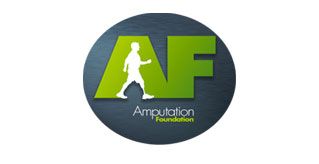Hit and run
A hit and run motorbike accident is when another driver or rider causes a traffic accident or collision and illegally fails to stop at the scene.
Drivers who flee the scene of an accident are often uninsured or aware that they were at fault. Being run-off the road by a driver who fails to stop, but without being actually hit, also counts as a hit and run.
What should you do after a hit and run accident?
By following Biker-SOS’s simple steps of what to do following a hit and run accident, you can improve your chances of making a claim. Even though the driver who caused the accident failed to stop and provide their details, there are other ways in which you can gather evidence to support your claim.
If you’ve been involved in a hit and run accident and the other driver has fled the scene, follow these steps:
- Collect contact details from any witnesses that saw the accident happen.
- Contact the police and report the accident – be sure to obtain a reference number.
- If you are uninjured or lightly injured, remain at the scene until the police arrive – it’s important to let the police review the situation.
- Collect visual proof of the accident by taking photographs of you, your motorcycle or your surroundings. This could act as evidence and is very important for insurance and legal purposes. Make sure to check for CCTV cameras in the area too. If your injuries are too severe, witnesses and/or bystanders can help to gather visual proof for you.
- Assess your injuries and have a medical professional examine you. They will be able to advise whether further rehabilitation is required.
- Contact Biker-SOS today – the motorcycle accident claim experts.
Can you still make a motorbike claim following a hit and run accident?
The simple answer is yes, you can still make a claim following a hit and run accident, even if you don’t have the other driver’s details. However, this means that gathering evidence of any kind, speaking to witnesses and contacting the police becomes even more important.
What is The Motor Insurers’ Bureau or MIB?
The Motor Insurers’ Bureau (MIB) is a not-for-profit organisation funded by the UK insurance industry that supports victims of motor accidents where the other party does not have insurance or where there has been a “hit and run” situation.
For the MIB to assist you, it will require three things:
- Proof that the other driver was at fault
- Proof you have suffered injuries and/or your motorbike was damaged in the accident
- Your full cooperation with the police
The experts at Biker-SOS will guide you through this process, should it be necessary.
How do solicitors fight a hit and run case?
The process of making a claim with the MIB can be time-consuming, but working with a solicitor who specialises in MIB claims, can help speed up your claim.
We’re experienced in representing vulnerable road users in cases like this and will work with the Motor Insurers Bureau to keep you updated throughout the claims process and help you get the compensation you deserve.
Why Biker SOS?
By choosing Biker SOS you’re choosing the motorbike accident specialists. We’ve handled 1 in 6 motorbike claims in the last 5 years alone – making us the largest specialist provider in the country.
We have access to a network of the very best barristers and non-legal experts to help you get the support you need, whether that’s help with care, rehabilitation, specialist equipment, or accommodation.
No Win No Fee
We understand the devastating impact a motorcycle accident can have on your life and the financial pressures it can bring, so we handle your claim on a No Win No Fee basis, meaning you won’t pay anything upfront to start your claim.
We’ve secured millions of pounds for thousands of motorcyclists
Types of Motorbike Accidents
Undertaking
Are motorbikes allowed to undertake? Although generally discouraged, according to The Highway Code, motorcyclists are allowed to undertake other road…
Filtering
How could I avoid a filtering accident? Filtering is a legal manoeuvre and is relatively safe, as long as riders pay attention to keep their speed appropriate…
Bike/bus lanes
How to avoid a bus lane accident Buses stop and pull away regularly to allow passengers on and off. In order to avoid accidents, motorcyclists must plan…
Dropping the bike
Can I make a claim after a dropped motorbike accident? If another road user causes you to drop your bike and injures you, then there may be cause to…
U-turn from a car
How to avoid a U-turn accident On high-speed multilane roads or dual carriageways with turning areas, motorcyclists need to be extremely cautious where…
Potholes
Potholes can cause a motorbike rider to have what is known as a ‘tank slapper’, which is when the front end of the bike violently shakes from side to side,…
Road debris / spillages
Knowing that the road ahead is clear of obstructions and how much grip is available can determine the rider’s ability to stop, speed up or change direction…
Junctions
Why do most motorbike accidents happen at junctions? There are many reasons why most motorcycle accidents happen at junctions but typical causes can include…
Animals and Children
How does this type of accident happen? Motorbike accidents can happen when animals or children run into the path of a motorcyclist, causing the biker…
Car door opened into path
How do car door motorcycle accidents happen? Often known as dooring, this type of motorcycle accident is unfortunately all too common. Either the biker…
Motorbike accident abroad
What happens if I have a motorbike accident abroad? With the promise of fantastic weather, stunning scenery and quiet roads, continental Europe has lots…
What to do in an accident?
How the claims process works.
You're in safe hands










